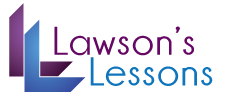Appropriate Language
OBJECTIVE: Students will be able to recognize and use appropriate language in their speeches.
MATERIALS: Multiple copies of the same newspaper.
STEPS:
1. Present to the students the eight tips for using appropriate language found at the web site The Owl at Perdue. (see below).
a. Levels of formality
b. In-Group jargon
c. Slang and idiomatic expressions
d. Deceitful language and euphemisms
e. Biased language
2. Arrange the students in groups of two and give each group a copy of the newspaper.
3. Have each group scan the newspaper for examples of inappropriate language. Give points for extra credit for each example found.
RESULT: Students will check their speeches for examples of inappropriate language and correct them.
Kim Hauschild
09-16-09
Jargon
What Did He Just Say?
TOPIC: Jargon
OBJECTIVE: Students will review the definition of jargon, identify examples of jargon in technical journalistic writing, and determine when it is appropriate to use in public speaking.
Materials: Copies of a magazine article for each student that contain a lot of jargon.
Steps:
1. Write the definition of jargon on the board.
Jargon is the language used by people who work in a particular area or who have a common interest: lawyers, computer programmers, criminals, etc. All have specialized terms and expressions that they use, many of which may not be comprehensible to the outsider. They may also use familiar words with different meanings as well as abbreviations, acronyms etc.
2. Explain that in public speaking it is not a good idea to use jargon unless you have a specific audience that will understand the terminology. For example if you were speaking at a medical conference it would be ok to use medical jargon because your audience would be doctors. They would understand the terminology.
Also explain that in some cases it is hard to not to use jargon in your speeches. In these cases, be sure to explain the term before moving on.
3. Ask the students if there are any other professions that they can think of that have their own jargon. Take three examples. Ask the students to identify jargon words to go along with each profession.
4. Do the same with three hobbies.
5. Hand out the articles and ask students to work in pairs. Have students analyze the article for examples of jargon used in the article. Have students copy these examples of jargon onto a piece of paper.
6. Ask each pair to determine whether the examples of jargon on their list were defined or explained in the article. Have them copy these definitions or explanations into their notebooks next to the corresponding word.
7. Some examples of jargon are not defined or explained in the article. Have students try to determine the definition of these words by analyzing their context in a sentence or paragraph. (There may be instances of jargon used in the article that student pairs are unable to explain or define. Have students leave a blank space next to these words.)
8. List on the board all the words that students determined to be jargon. First, discuss the examples of jargon defined or explained in the article. Ask students why these words were defined for the reader. Would the average reader be able to figure out what these words meant if an explanation wasn’t provided?
9. Then discuss the examples of jargon that were not defined by the article. Which words could the students understand or easily figure out? Are there examples of jargon used in the article that are not defined but should have been? Look up any words that cannot be defined.
10. Ask the students to read the article one more time, now that all of the jargon has been explained. Did they understand the article better?
Results: Homework: Each student should find a journal article and list 10 appropriate jargon words that appeared in the article. Have the students note whether or not the instances of jargon were defined, and whether the jargon that wasn’t defined was understandable to the average reader or not.
